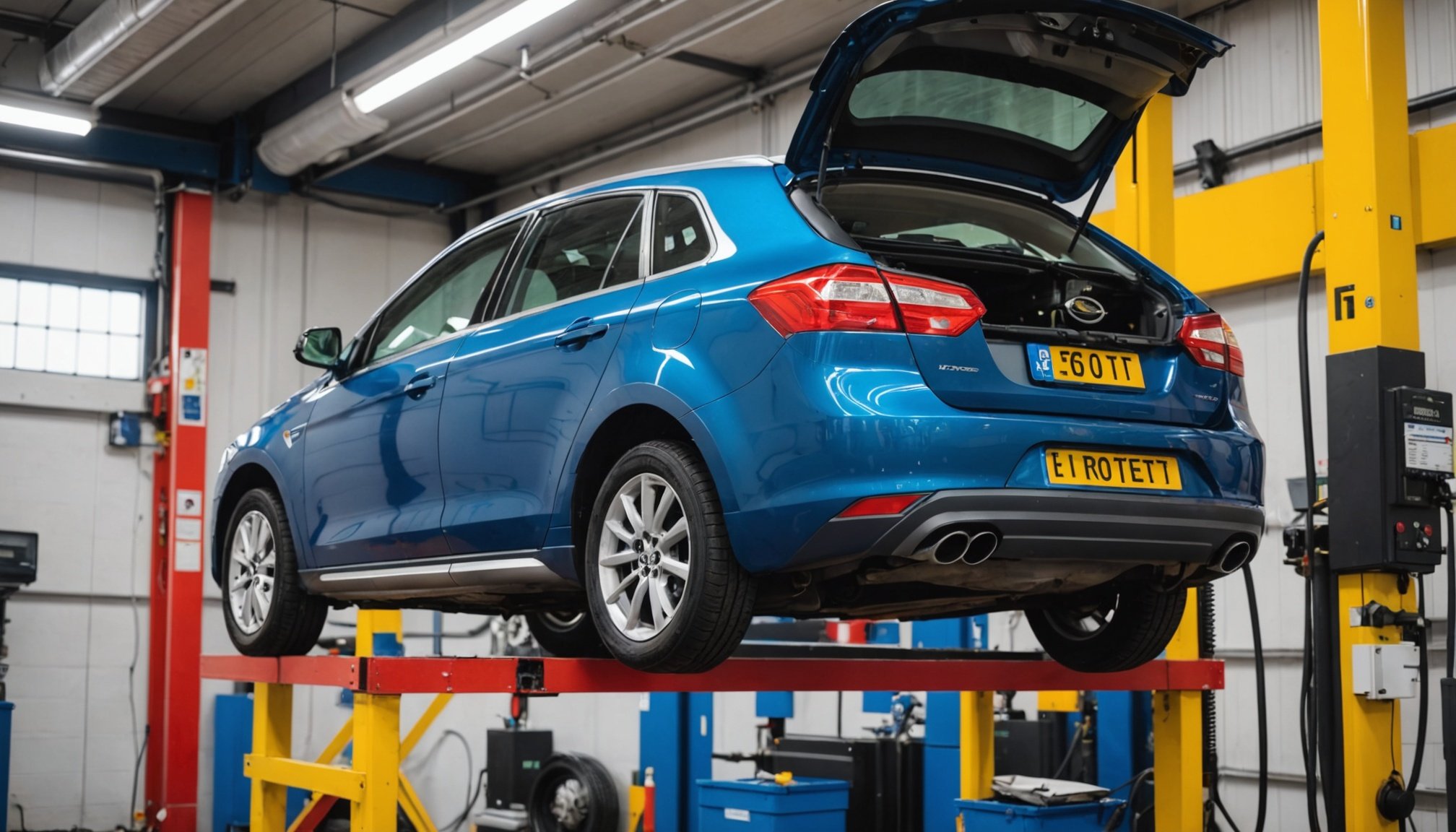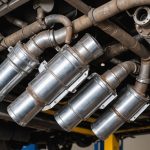Understanding the UK MOT Emissions Test
The UK MOT emissions test is a critical assessment for ensuring vehicles comply with environmental regulations. Designed to measure the pollutants emitted by vehicles, it ensures that cars meet the necessary emissions standards to minimise their environmental impact. By passing this test, vehicles demonstrate their adherence to regulated emission limits, thus contributing to a cleaner environment.
Compliance with these standards is not only essential for environmental protection but also a legal requirement. Vehicles that fail to meet the emissions standards during the UK MOT emissions test can face significant consequences. These can include fines, the inability to renew taxes or insurance, and even restrictions on usage.
Have you seen this : The Impact of Failing to Renew Your Vehicle Registration in the UK: What You Need to Know
Therefore, maintaining vehicle compliance is crucial. Regular checks and servicing can help vehicle owners avoid penalties and ensure their cars meet the required standards. Furthermore, ensuring that a vehicle adheres to emissions standards can improve its efficiency and longevity, making it a practical decision from both an environmental and economic standpoint.
Understanding and adhering to these emissions standards means taking part in a collective effort to reduce pollution and protect the atmosphere, supporting sustainable environmental initiatives in the UK.
In parallel : Essential Tips for Keeping Your Vehicle Noise-Compliant in Urban UK Zones
Essential Maintenance Checks
Ensuring your vehicle is ready for an emissions test involves several pre-test checks focusing on emissions-related maintenance. Start by inspecting key components such as the exhaust system, air filters, and spark plugs. These components play vital roles in the emissions control process, directly influencing your vehicle’s performance during tests.
-
Exhaust System: Examine for leaks or damage that can lead to increased emissions and poor vehicle performance. A well-maintained exhaust system helps in efficiently removing harmful gases from the engine.
-
Air Filters: Clean or replace air filters regularly. Clogged air filters reduce air flow to the engine, increasing fuel consumption and emissions. This simple vehicle maintenance step can improve both efficiency and reduce harmful emissions.
-
Spark Plugs: These ensure effective combustion within the engine. Worn-out spark plugs can lead to incomplete fuel combustion, raising emission levels.
Incorporating regular servicing routines into your vehicle maintenance strategy can significantly impact emission levels. Maintaining these components not only aids in passing the emissions test but also enhances overall vehicle efficiency and performance. In summary, integrating these checks into your routine maintenance can ensure your vehicle remains eco-friendly and in line with emission standards.
Common Emission Issues
Understanding emission problems in vehicles is crucial for maintaining efficiency and ensuring compliance with environmental regulations. Common vehicle faults that often lead to increased emissions include malfunctioning oxygen sensors, faulty catalytic converters, and issues within the engine control unit. These components are integral in controlling emissions, and any damage or malfunction can significantly affect a vehicle’s output.
Early troubleshooting emissions can prevent these problems from escalating. Regular diagnostic tests are recommended, focusing especially on the emission control systems. A routine check ensures that components like the mass airflow sensor, exhaust gas recirculation valve, and other emissions-related parts are functioning optimally.
The engine management system plays a pivotal role in emission control by continuously monitoring various parameters and adjusting the fuel-air mixture accordingly. It utilises various sensors to detect anomalies and promptly informs the driver, usually by illuminating the check engine light. Understanding these signals and addressing them quickly is essential to preventing larger, costly issues.
By focusing on consistent maintenance and attentive troubleshooting, drivers can enhance their vehicle’s performance and comply with emission standards. Investing in regular service checks will not only ensure a smoother drive but also contribute to a healthier environment.
Tips to Improve Vehicle Emissions
Improving vehicle emissions can significantly contribute to an eco-friendly future. Simple driving habits can make a profound difference in emissions performance. For instance, maintaining a steady speed and avoiding sudden accelerations or braking can reduce fuel consumption and emissions. Turning off your engine when idling for long periods also plays a crucial role in reducing emissions.
Consider choosing eco-friendly fuel options to further enhance your vehicle’s performance. Fuels such as biodiesel and ethanol not only help in minimizing harmful exhaust gases but also support sustainable practices. They can be an effective substitute for conventional petrol or diesel, depending on your vehicle’s compatibility.
Exploration of aftermarket modifications for emissions improvement is another aspect worth investigating. Options like upgrading to high-flow air filters or exhaust systems can increase your engine’s efficiency, resulting in reduced emissions. Additionally, employing advanced technologies such as engine re-mapping could optimise your vehicle’s fuel efficiency and emissions profile.
By adopting these practices and modifications, drivers can take the lead in promoting cleaner air quality and contribute positively to environmental sustainability. Prioritizing these strategies will guide you towards more responsible and effective driving.
Preparation Checklist for the MOT Test
Ensuring your vehicle is ready for the MOT test can be stress-free if you follow a detailed MOT preparation checklist. Begin by examining the essentials: lights, tyres, and safety features. These components often contribute to test failures, so thorough checks can prevent re-tests. Start with exterior lights, ensuring all bulbs function and lenses are clean; this helps avert visibility issues and potential safety hazards.
Next, focus on the tyres, as their condition is critical. Verify they have adequate tread depth (the legal minimum being 1.6mm), are free from cuts or bulges, and are inflated to the recommended pressures per your vehicle’s manual. Regular tyre maintenance not only prepares you for the test but also promotes safer driving.
Beyond mechanical checks, ensure you have all necessary documentation ready. This includes your vehicle registration, previous MOT certificates, and service records—proof of maintenance can inform the tester of your vehicle’s history and upkeep.
By following this pre-test checklist, not only do you meet the requirements, but you also gain peace of mind knowing your vehicle is in optimal condition. Keeping these preparations in mind boosts your chances of passing the MOT with ease.
Additional Resources and Assistance
For vehicle owners seeking valuable insights into their MOT needs, exploring MOT resources can provide much-needed clarity. Access to official government guidelines on the MOT is indispensable for understanding legal requirements and compliance details. These guidelines often offer comprehensive information on testing standards and procedures.
In addition to these resources, certain tools and apps can significantly aid in vehicle maintenance tracking. These digital solutions help you schedule services and monitor your vehicle’s health, ensuring it remains in top condition and compliant with vehicle regulations. Popular apps often feature reminders for MOT tests, service check-ups, and even provide diagnostic tools for real-time vehicle performance analysis.
When it comes to finding trusted mechanics and garages for servicing, it’s crucial to rely on recommendations from reputable MOT resources. Look for well-reviewed mechanics and garages that adhere to official standards, delivering quality service that you can rely on. Verified reviews and endorsements from fellow vehicle owners can also offer peace of mind, know-you’re making the best choice for your vehicle’s maintenance needs.
Engaging with these resources and expert advice not only empowers you to maintain compliance with MOT requirements but also enhances your overall vehicle ownership experience.











